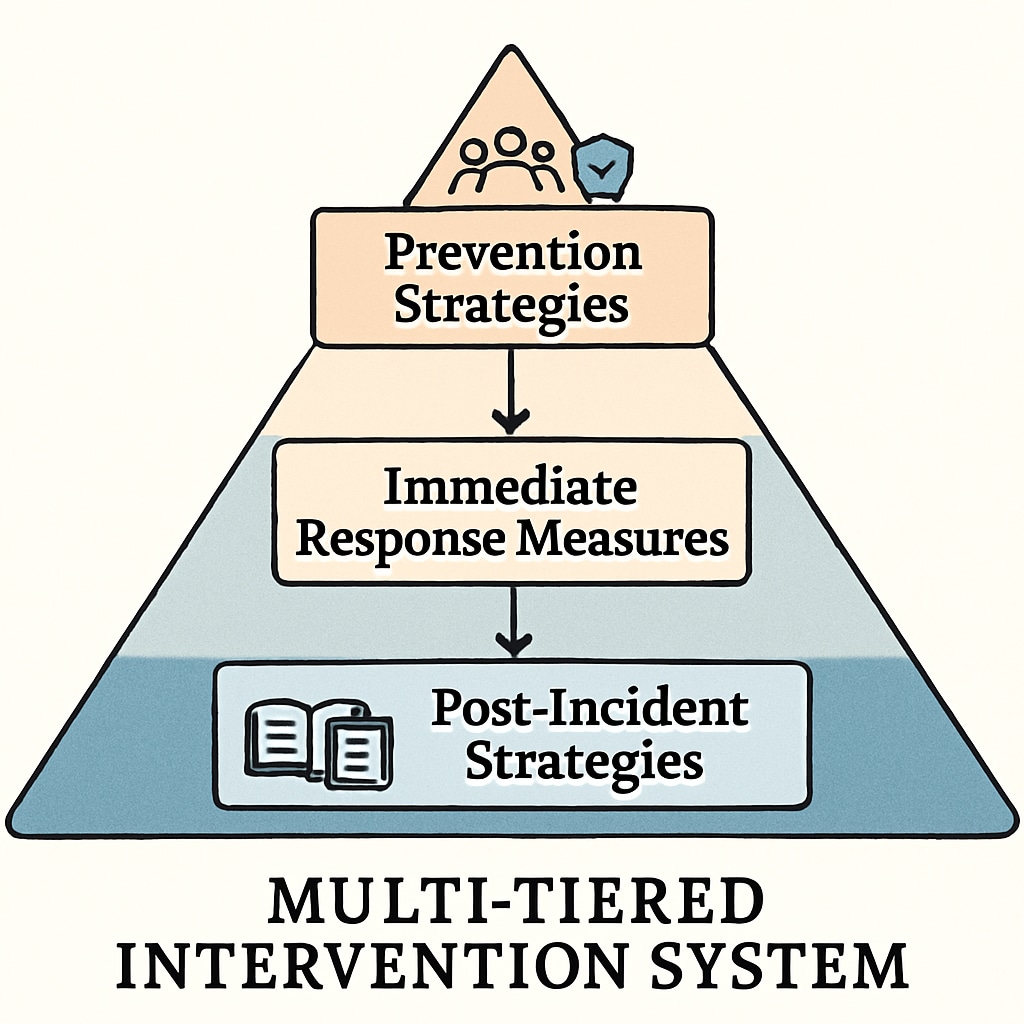School bullying remains a critical issue in education systems worldwide, necessitating robust mechanisms for effective “school bullying management.” Ideally, such a system should address immediate concerns while fostering long-term student growth. This article outlines a comprehensive approach to bullying management, focusing on defining behaviors, implementing multi-layered interventions, and balancing disciplinary actions with educational goals.
Defining Bullying: A Crucial First Step
An effective bullying management mechanism begins with a clear and precise definition of bullying. Bullying can be physical, verbal, or psychological, often involving repeated aggressive actions and a power imbalance. By categorizing specific behaviors that constitute bullying, schools can create a universally understood framework to identify and address issues.
For example, the Britannica definition of bullying emphasizes intentional harm, making it easier for educators and students to discern between conflict and bullying. This clarity reduces ambiguity and ensures targeted interventions.

Multi-Layered Intervention Systems
Once bullying is identified, an ideal mechanism should deploy a multi-layered intervention system. This system includes prevention, immediate response, and post-incident strategies:
- Prevention: Incorporating emotional intelligence (EQ) training and social responsibility programs into the curriculum can help students develop empathy and communication skills, reducing the likelihood of bullying.
- Immediate Response: Schools should implement a transparent reporting system, ensuring that victims feel safe and heard. A dedicated team of counselors and educators can investigate and address incidents promptly.
- Post-Incident Strategies: Restorative practices, such as mediated discussions between parties, can help rebuild trust and address underlying issues. Additionally, tailored support for both victims and perpetrators is essential.
For further insights into intervention systems, the Wikipedia entry on school bullying provides an overview of global practices and their effectiveness.

Balancing Discipline with Education
Disciplinary actions are often necessary to deter bullying, but punishment alone does not address the root causes. An ideal system emphasizes education alongside discipline, fostering behavioral change and emotional growth. For perpetrators, incorporating cognitive-behavioral therapy (CBT) or EQ workshops can help them recognize the impact of their actions and develop healthier coping mechanisms.
Similarly, victims should receive psychological support to rebuild their confidence and resilience. Schools can create mentorship programs pairing victims with trusted adults or peers, offering continuous guidance and support.
By prioritizing educational interventions, schools can help students grow into socially responsible individuals who contribute positively to their communities.
Creating a Long-Term Impact
The ultimate goal of a bullying management system is to create a safe and inclusive educational environment. By investing in preventive education, transparent reporting systems, and balanced interventions, schools can address bullying effectively while promoting emotional intelligence and social responsibility.
In addition, regular assessments and feedback loops ensure the system evolves based on new challenges and insights. Schools should consider engaging external experts, such as psychologists and child behavior specialists, to refine their strategies further.
As a result, an ideal school bullying management mechanism fosters not just safety but also growth, preparing students for a healthier, more empathetic future.
Readability guidance: This article uses brief paragraphs, clear transitions, and lists to break down complex ideas. It balances active and passive voice, ensuring clarity and engagement throughout.


